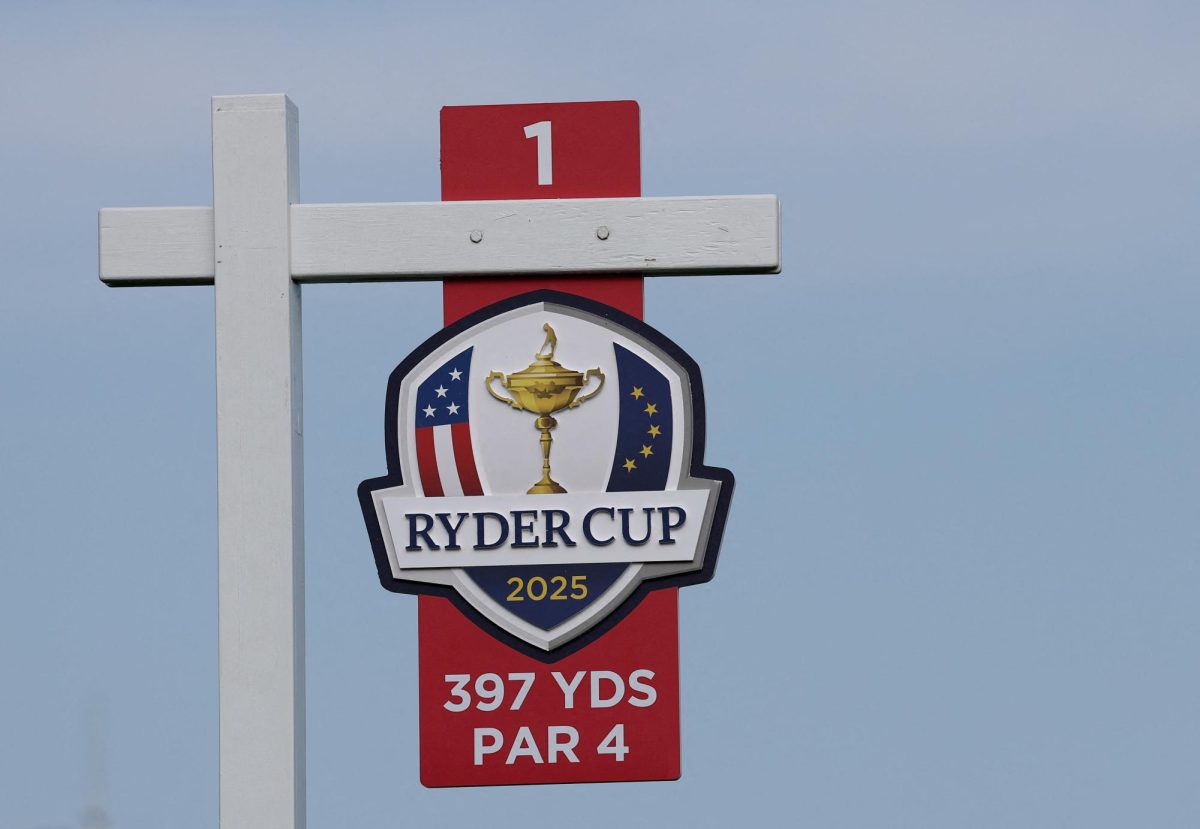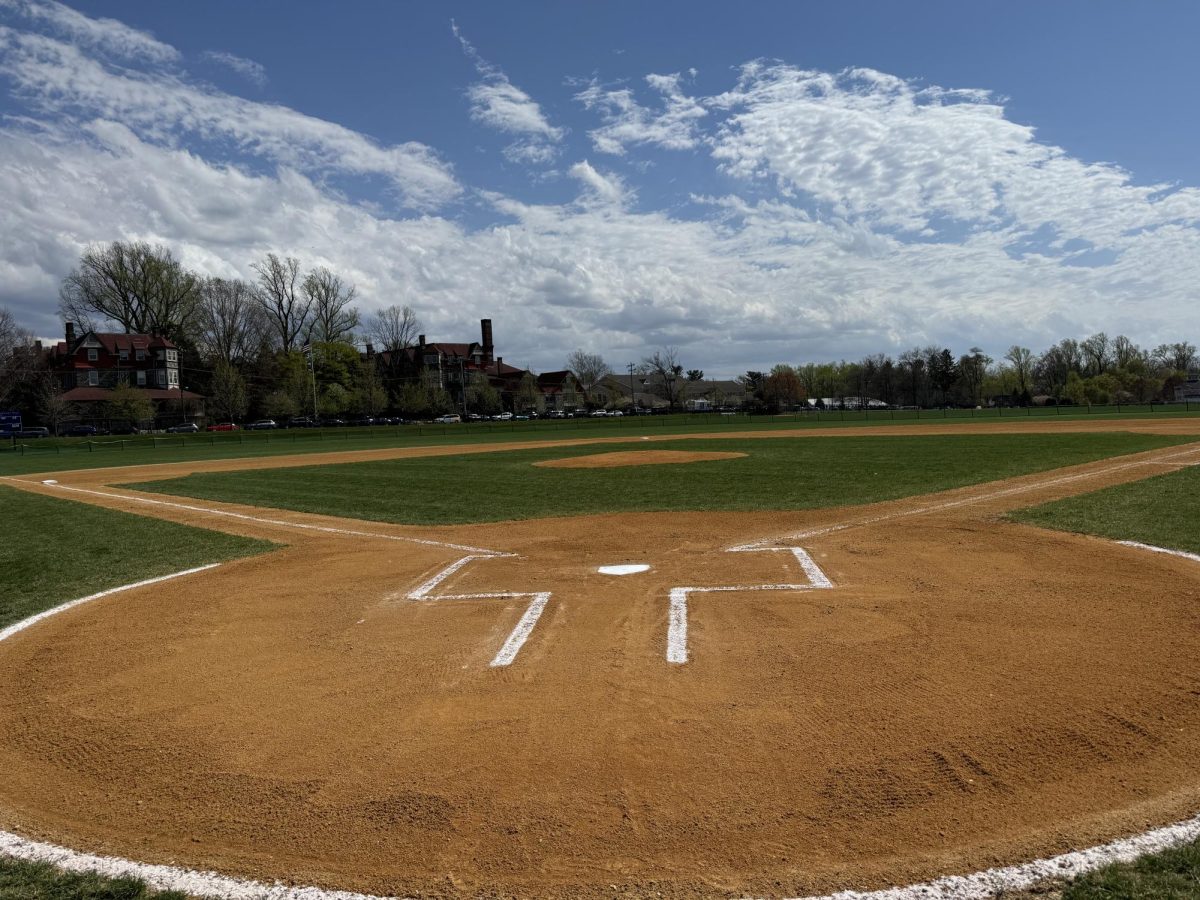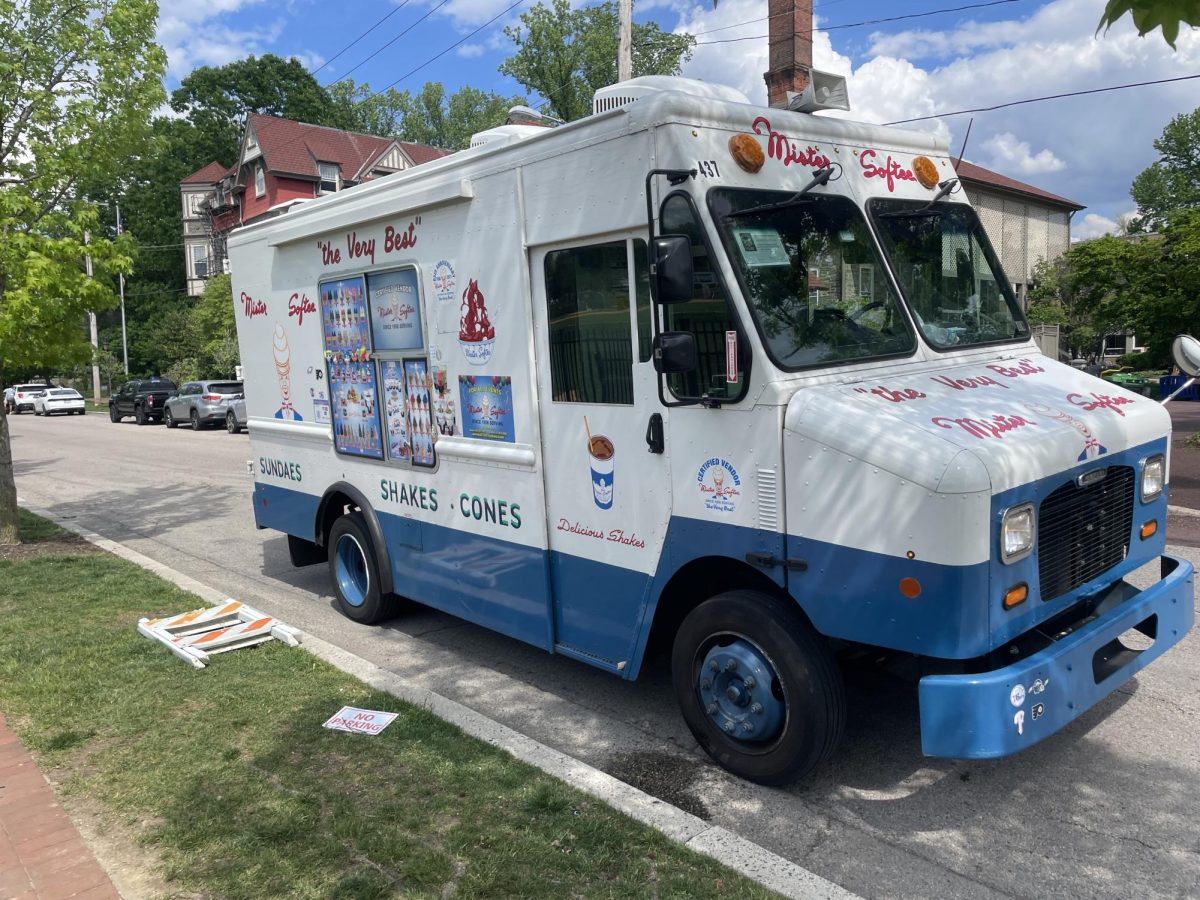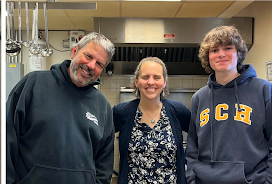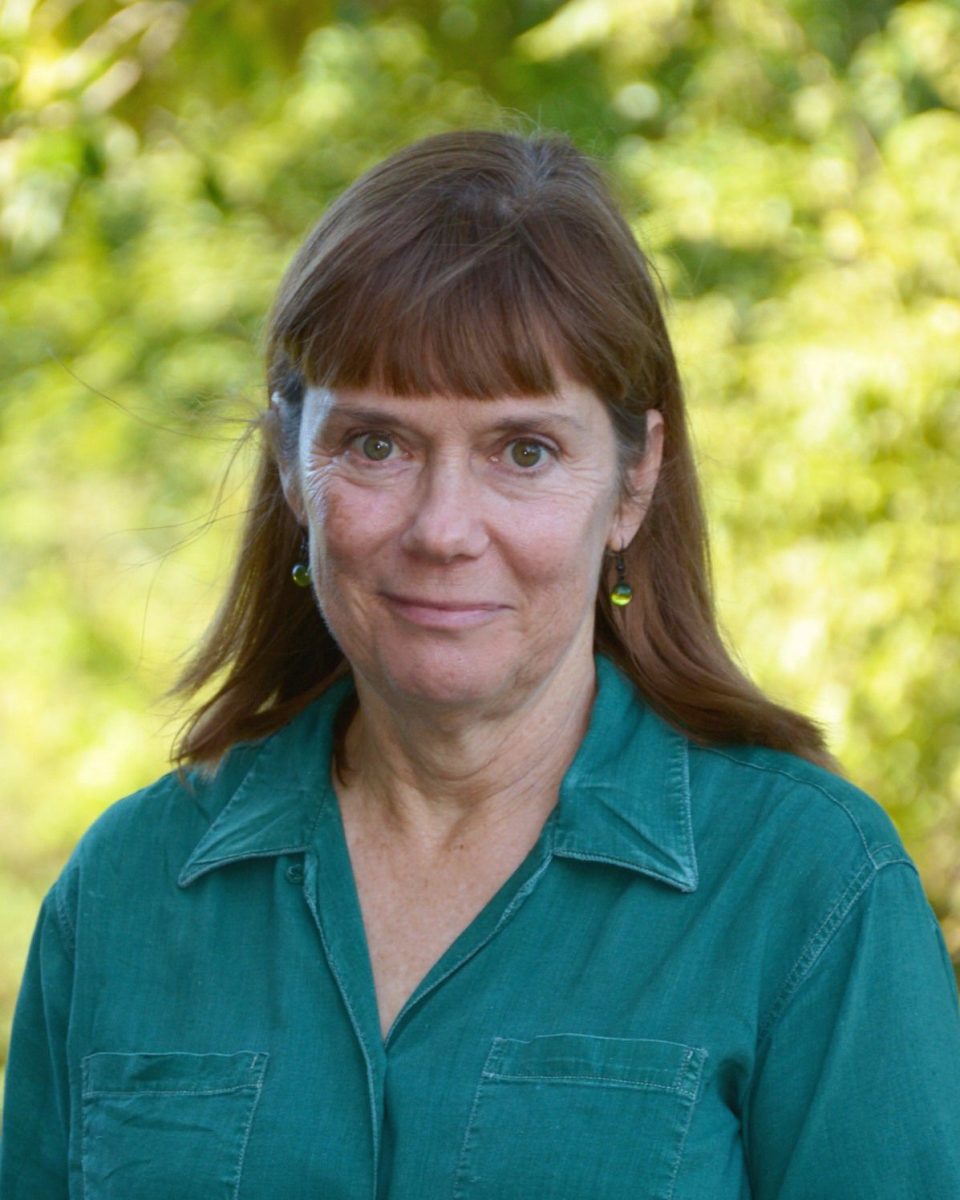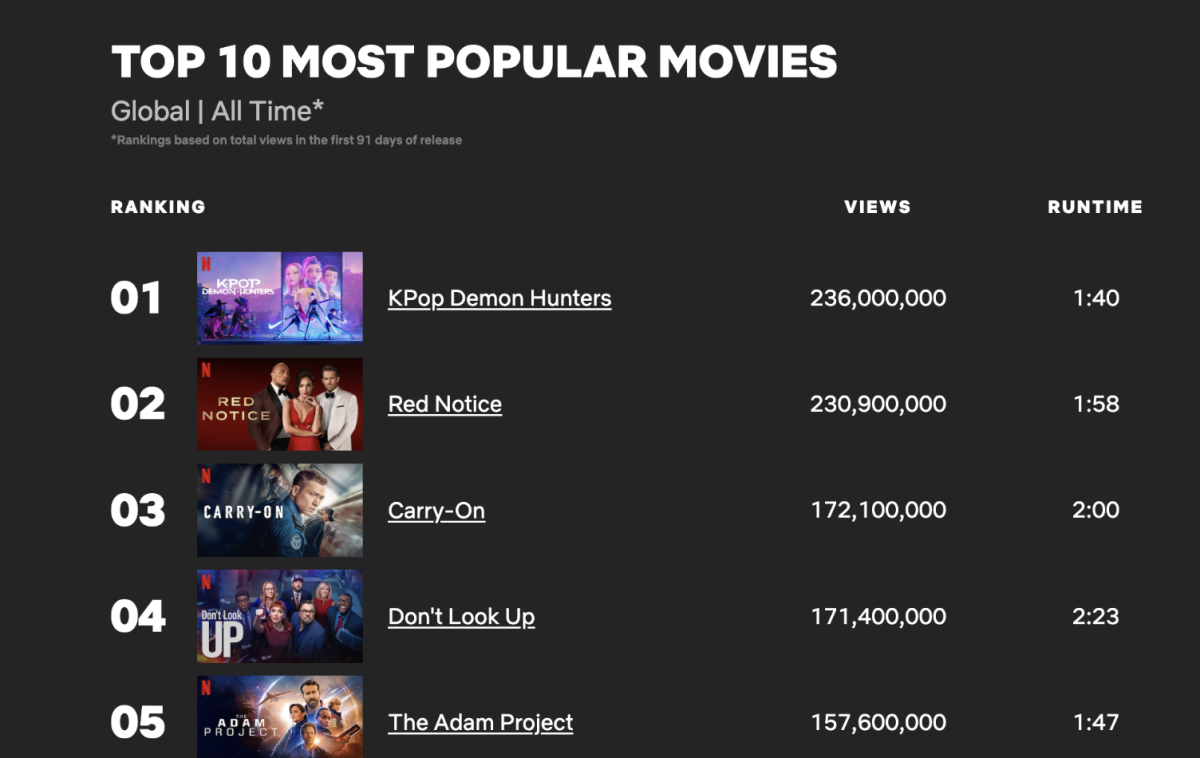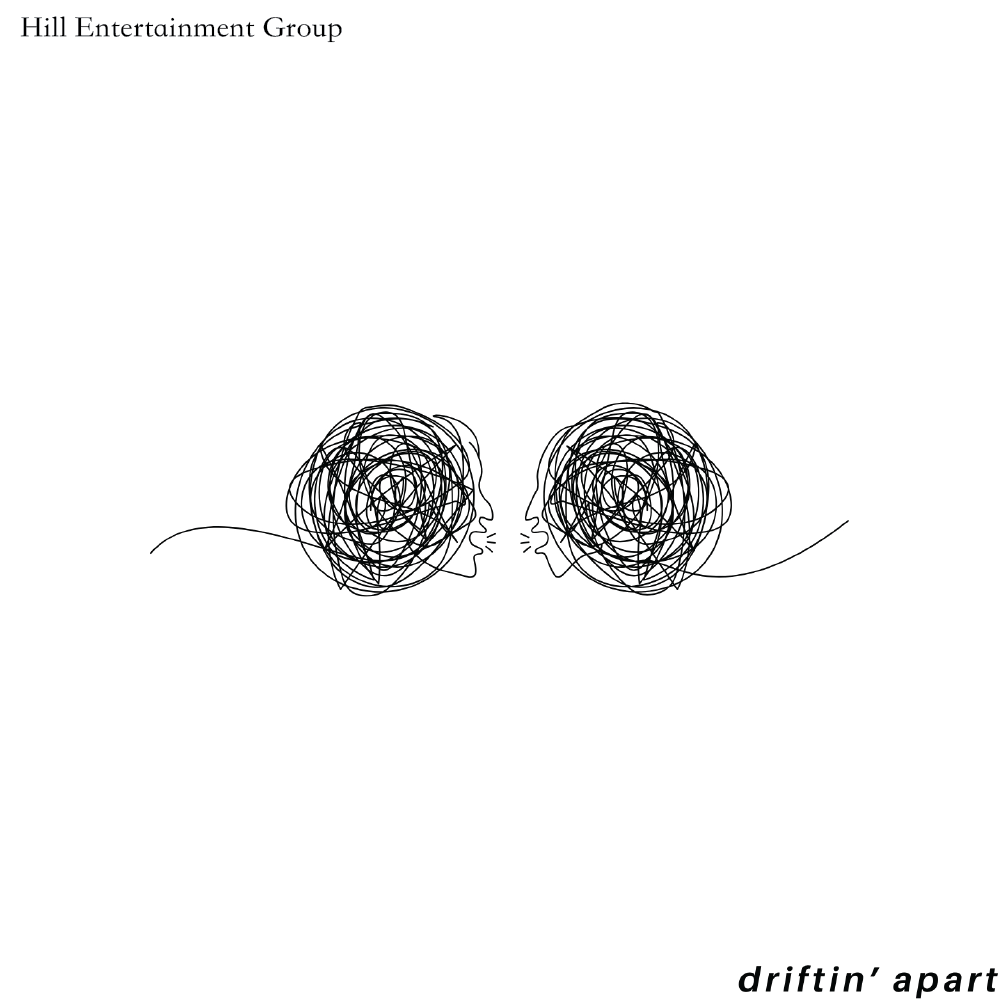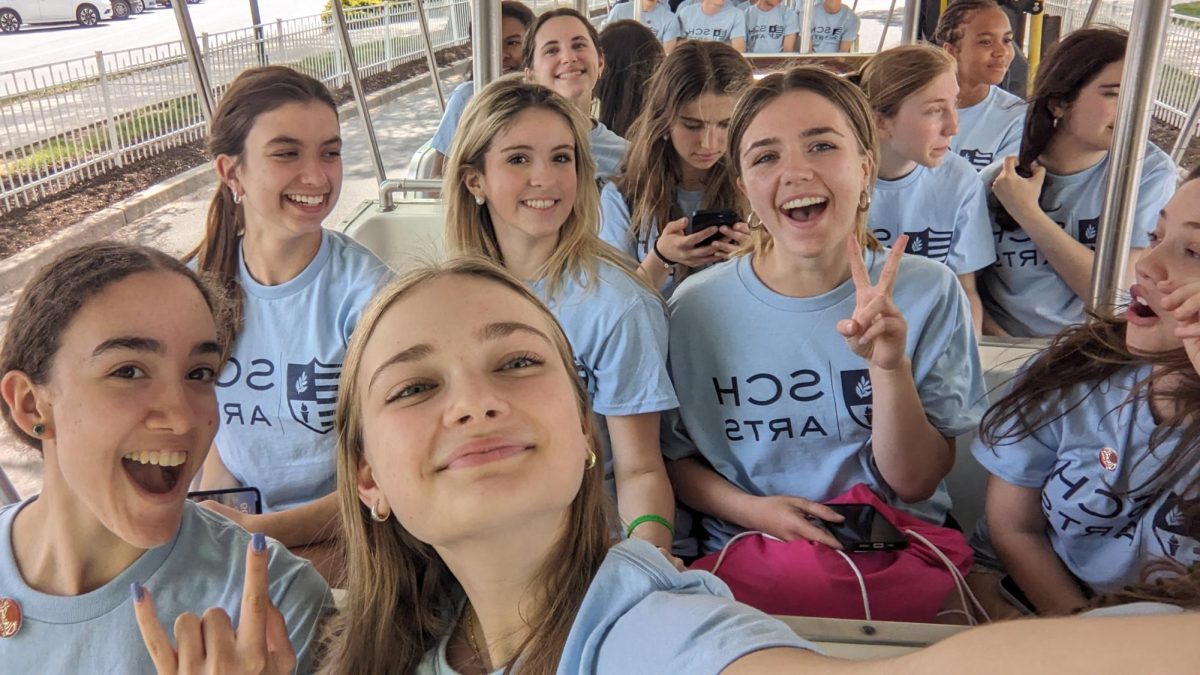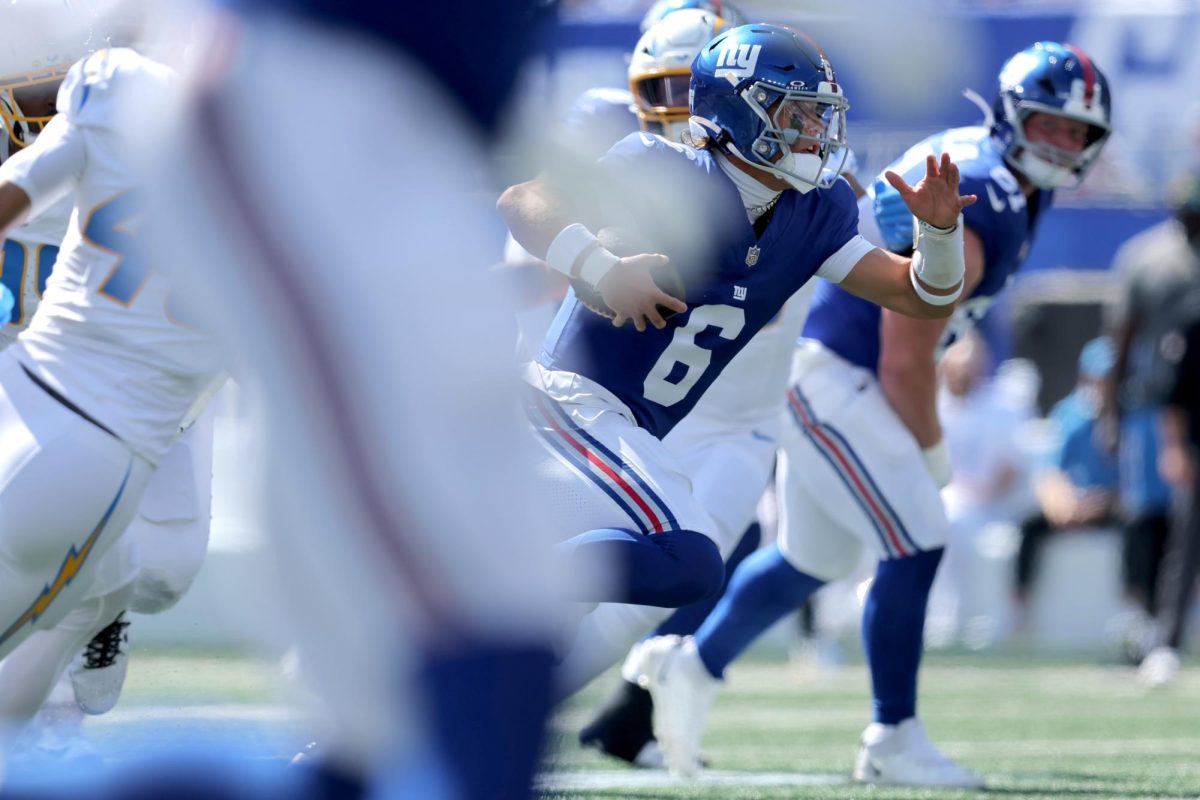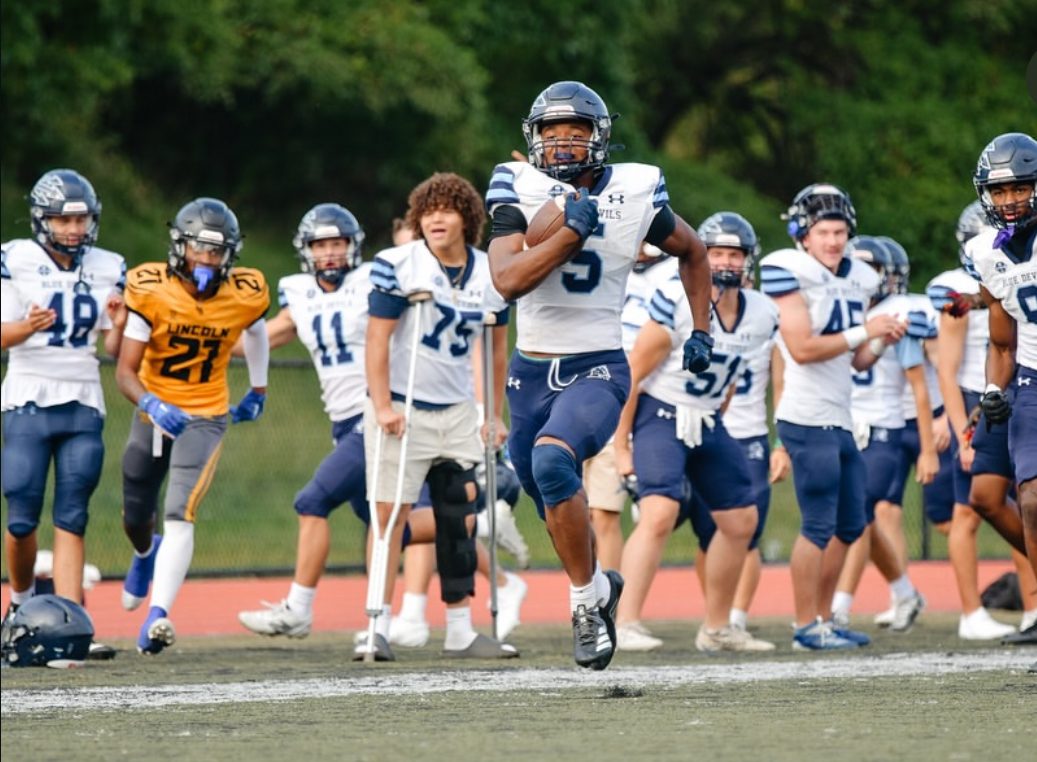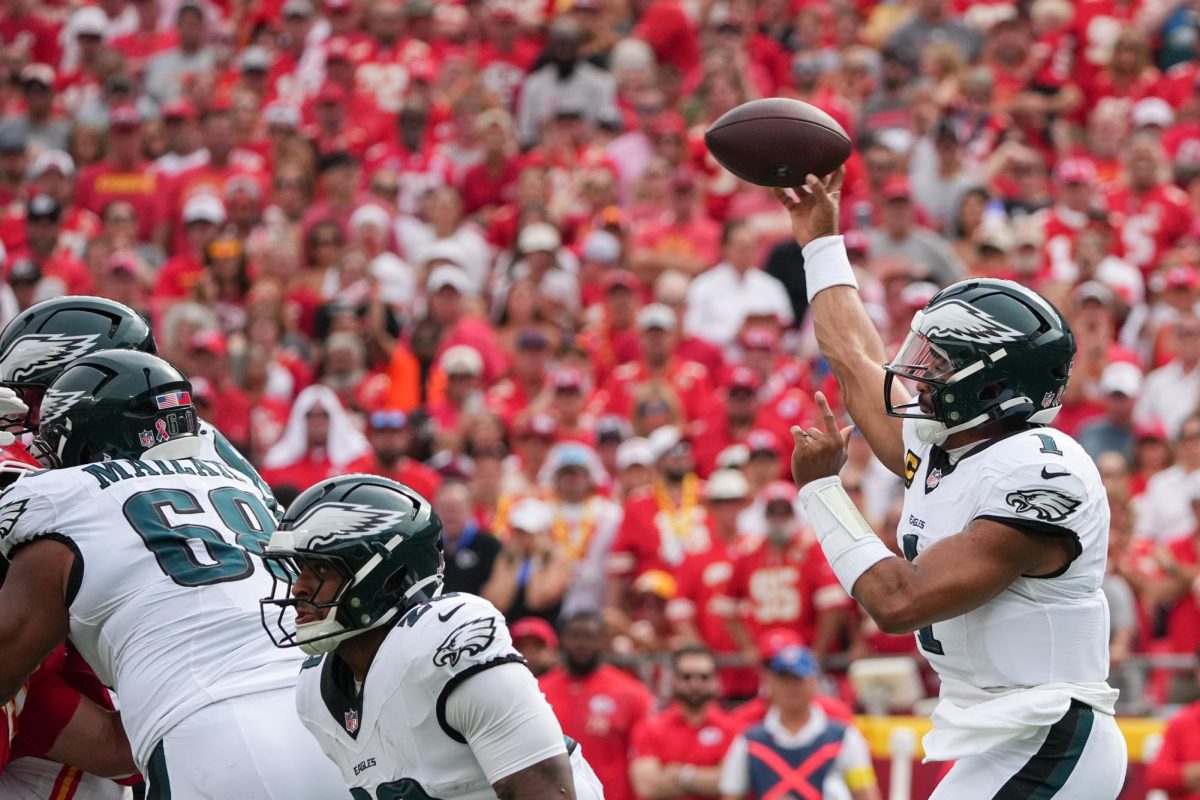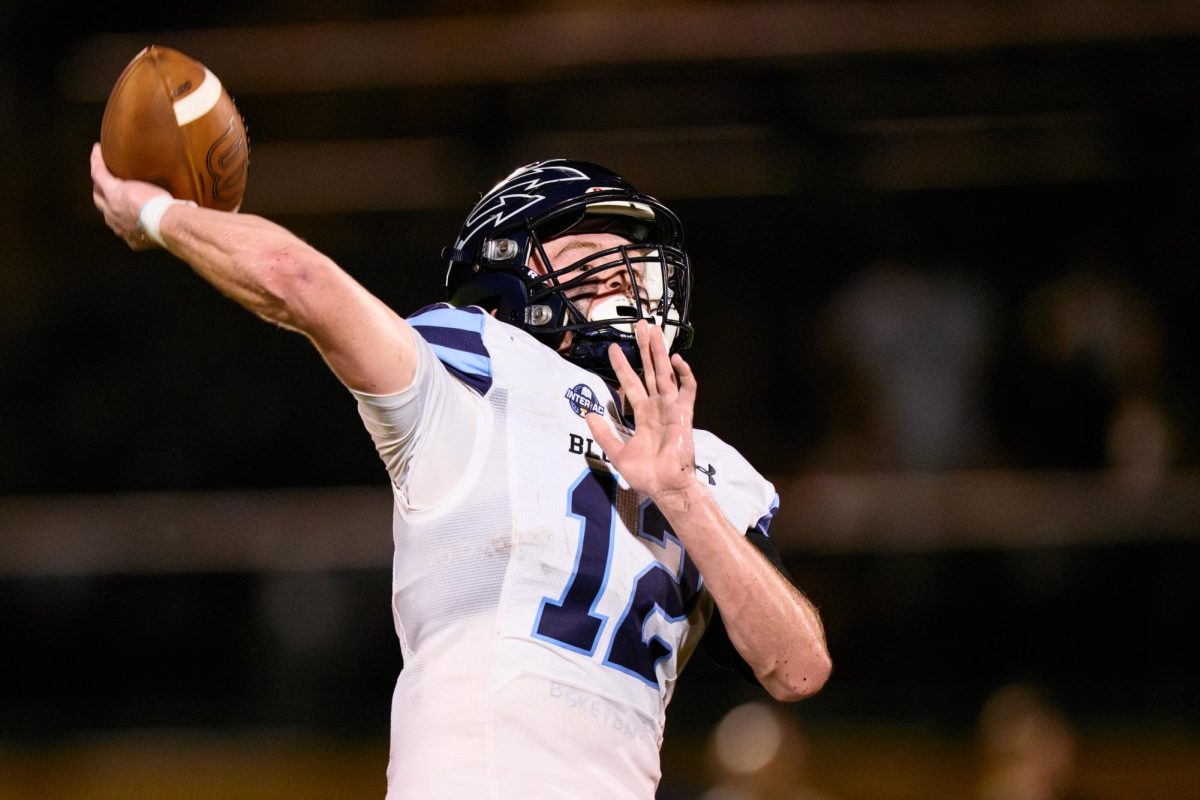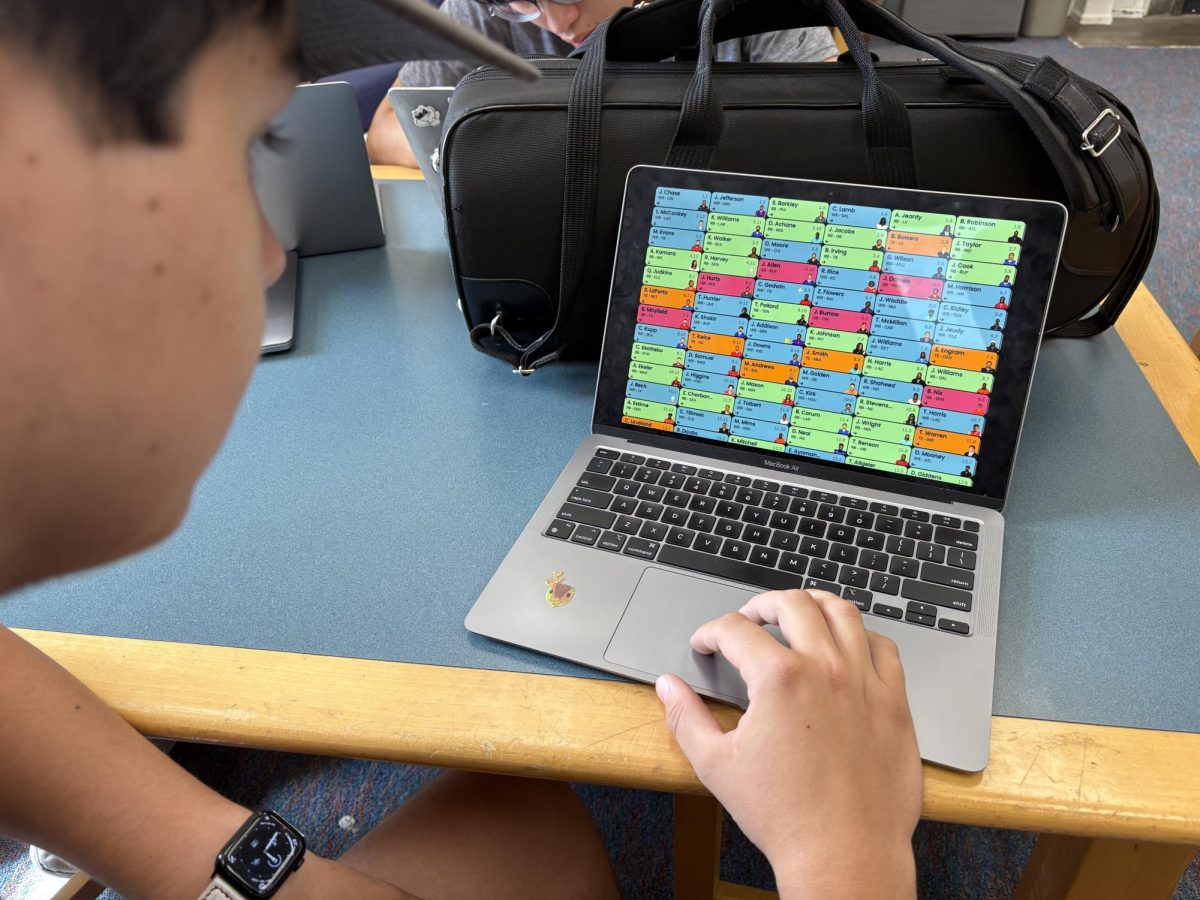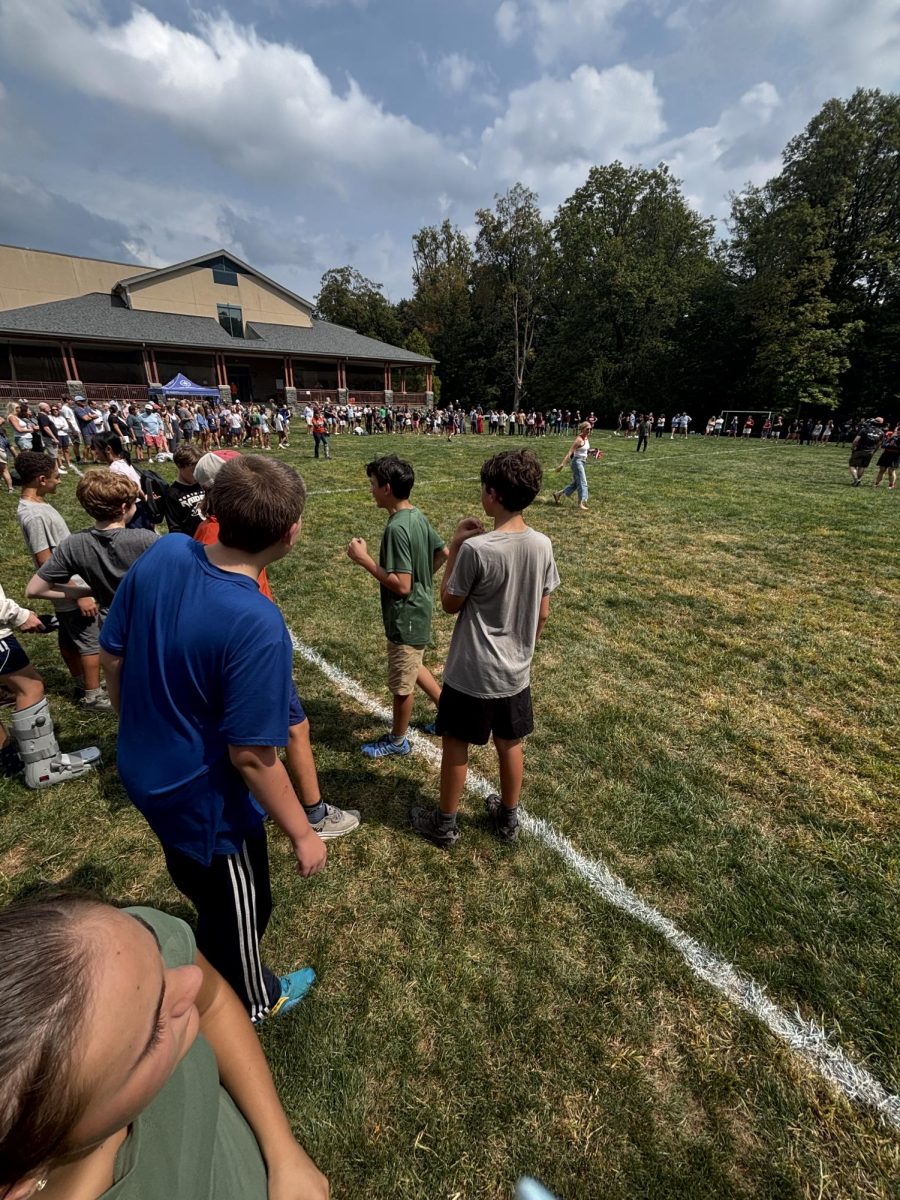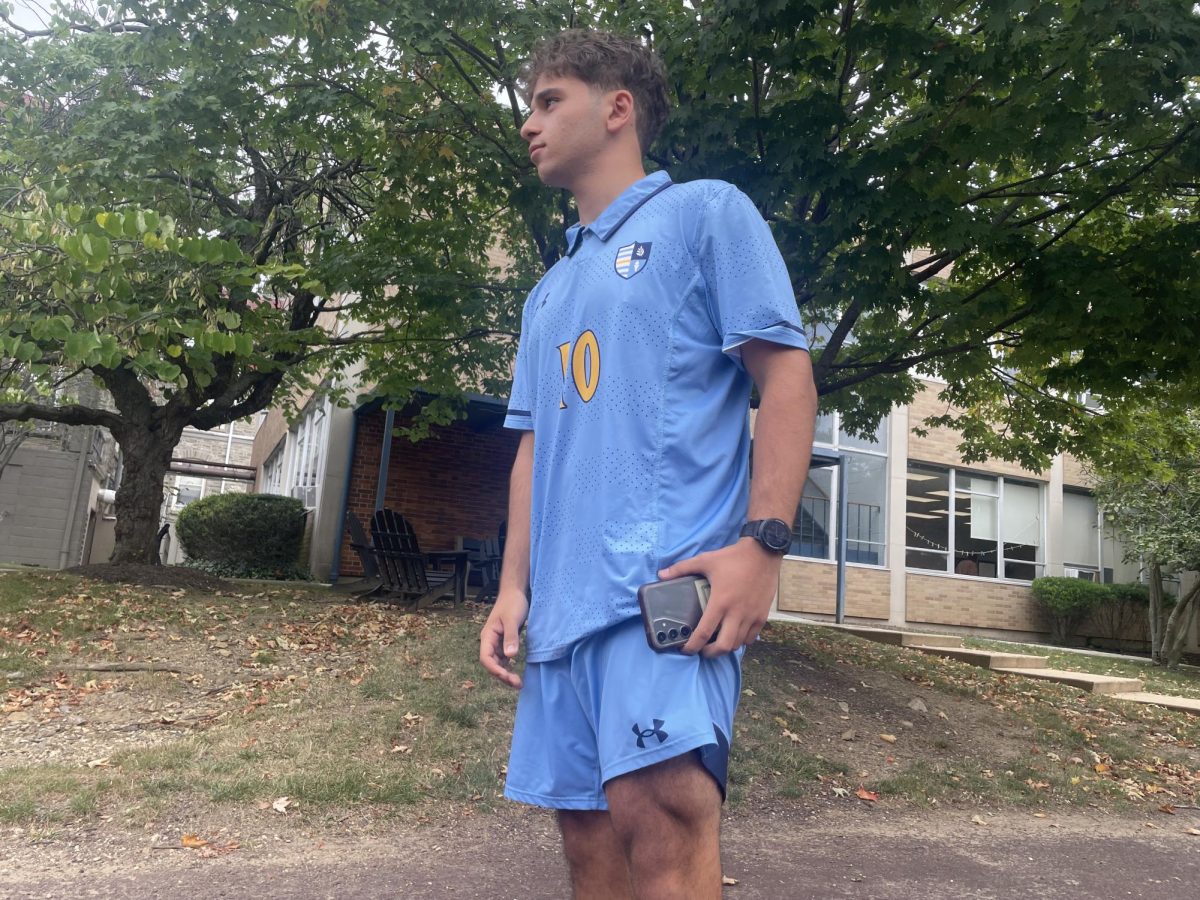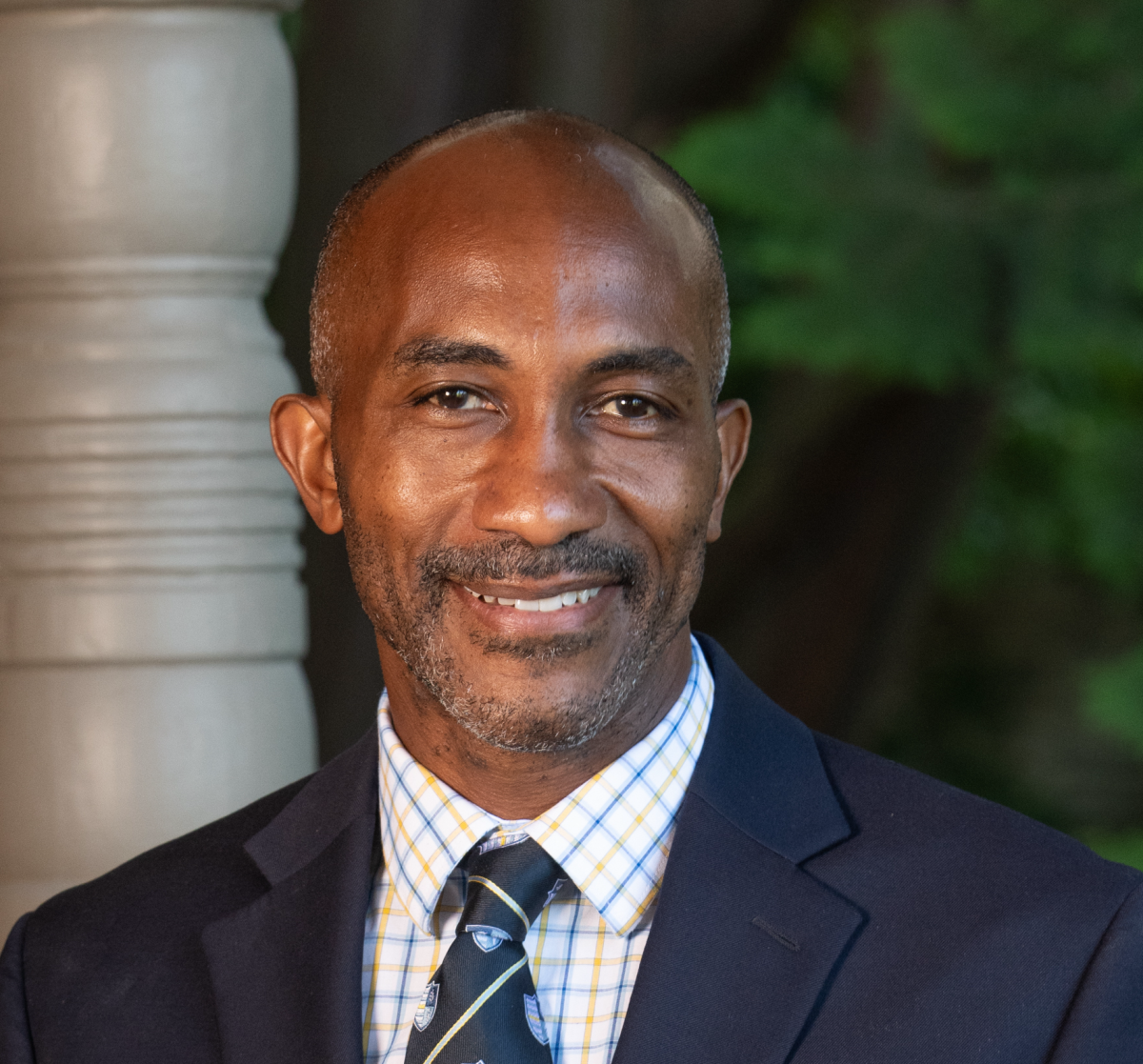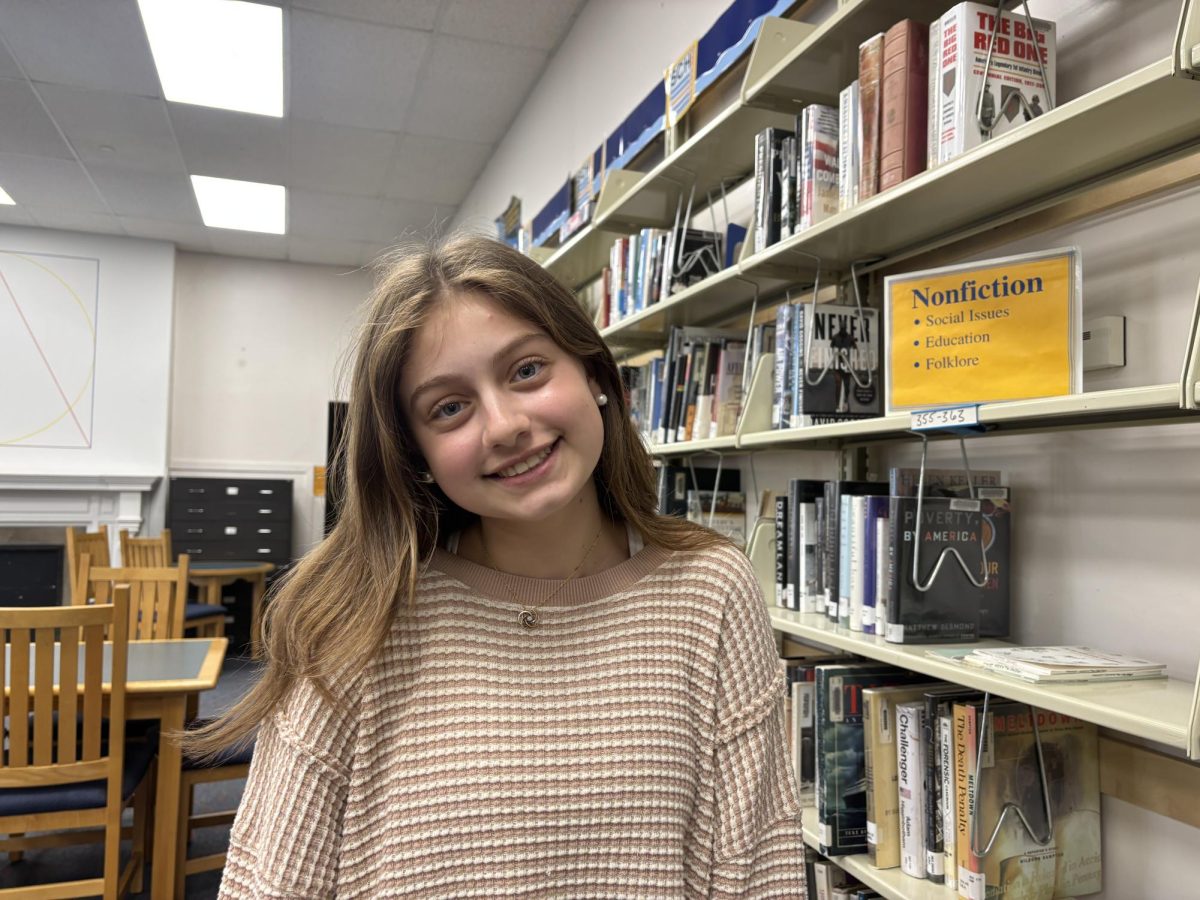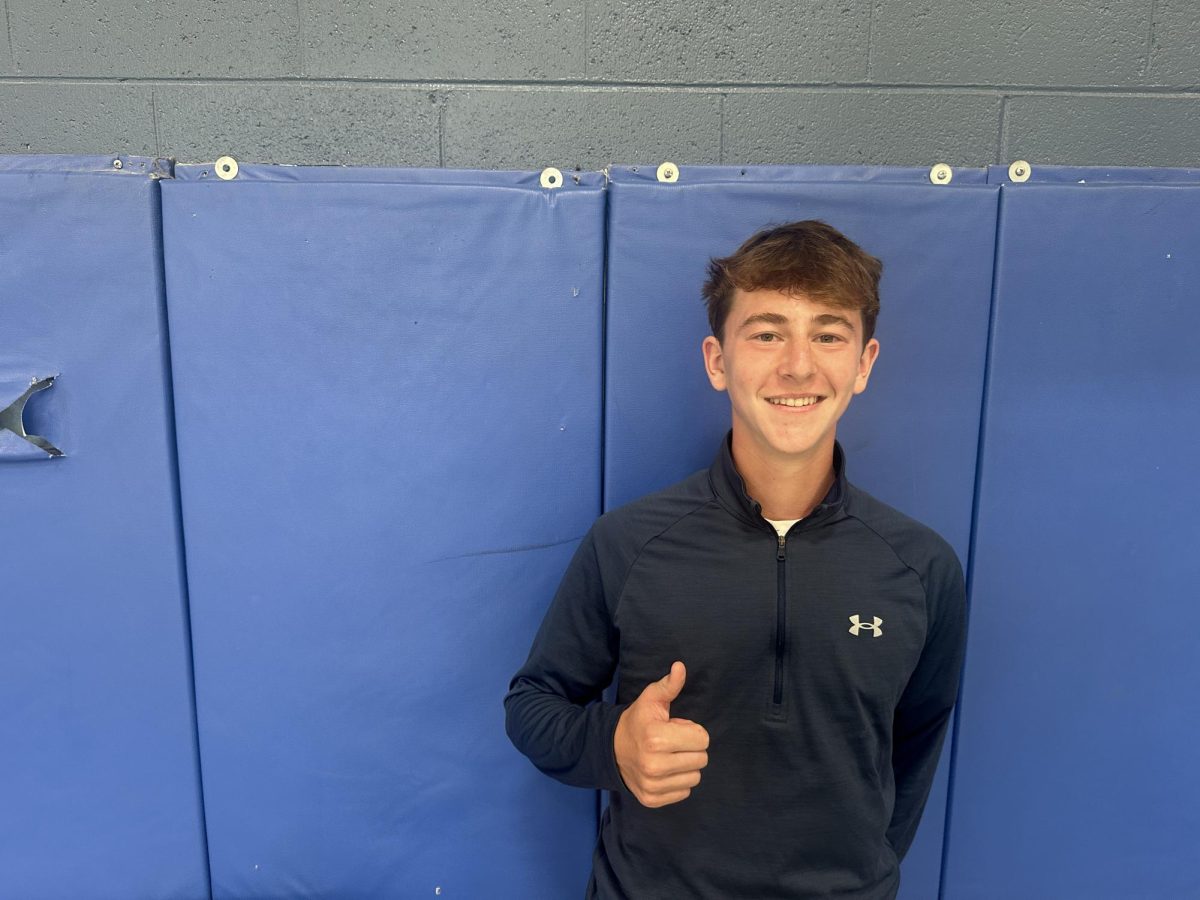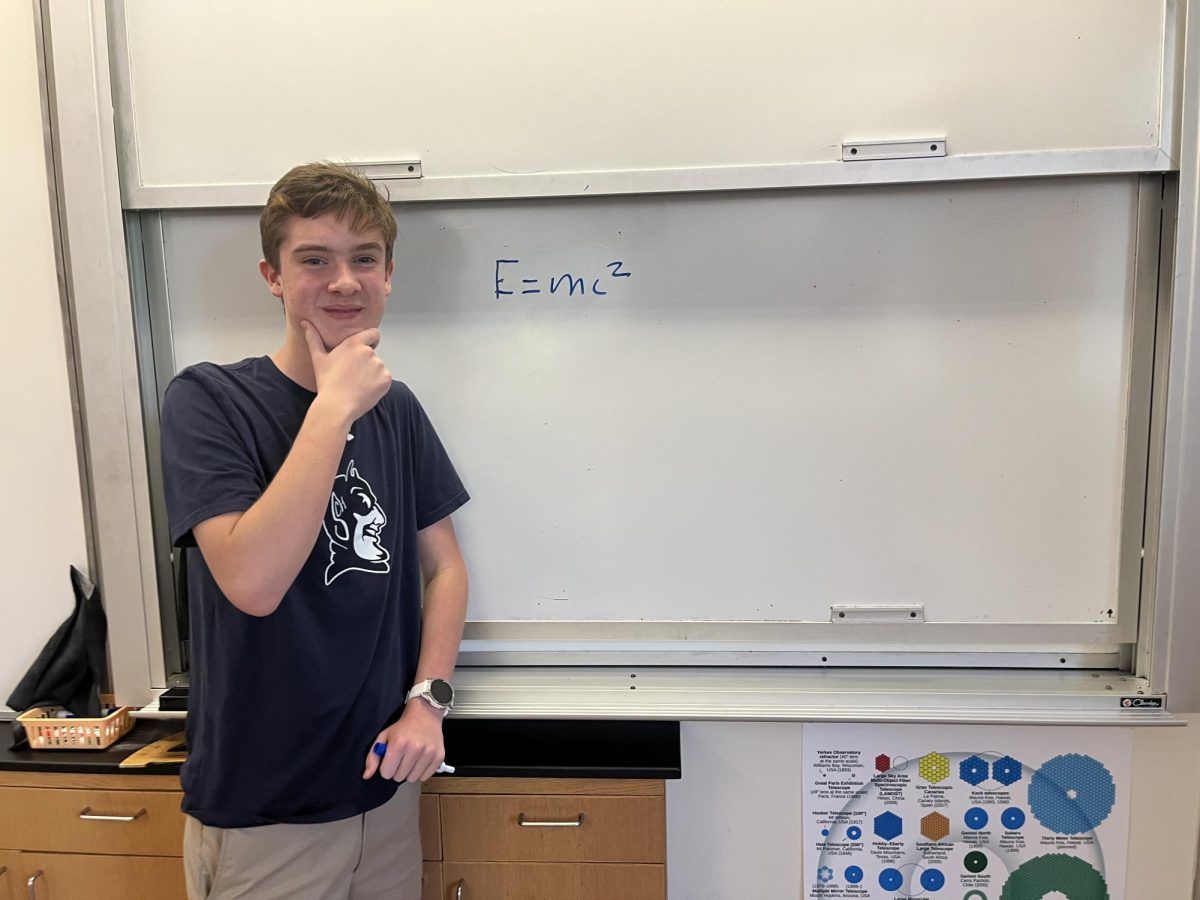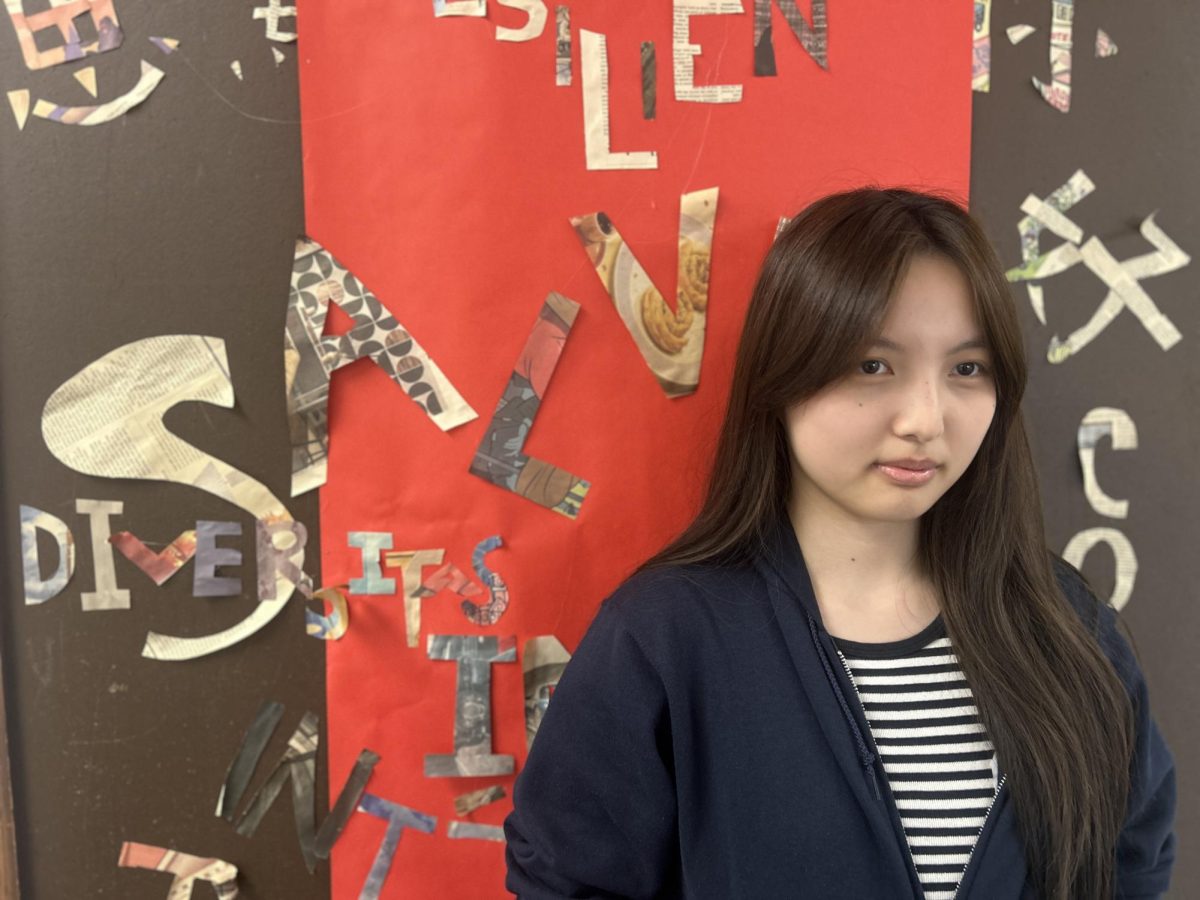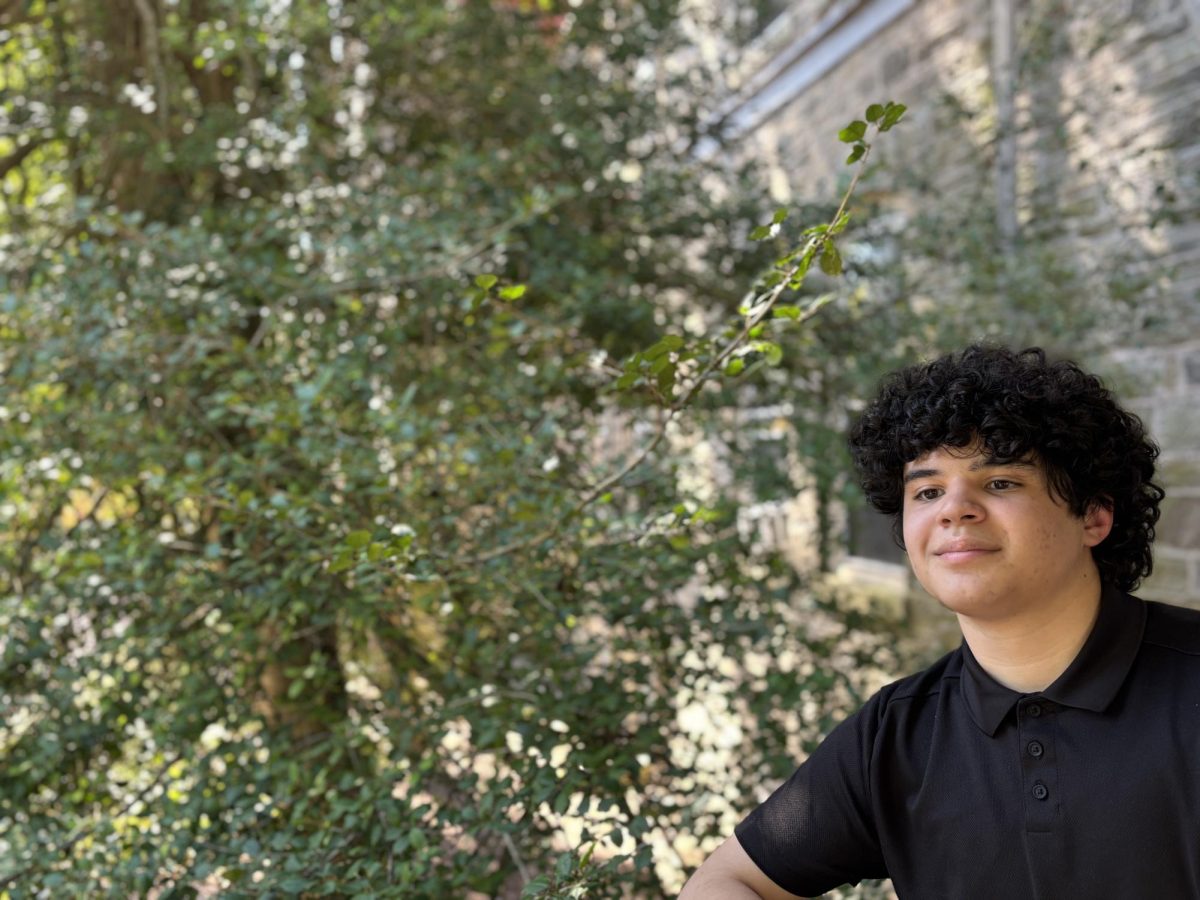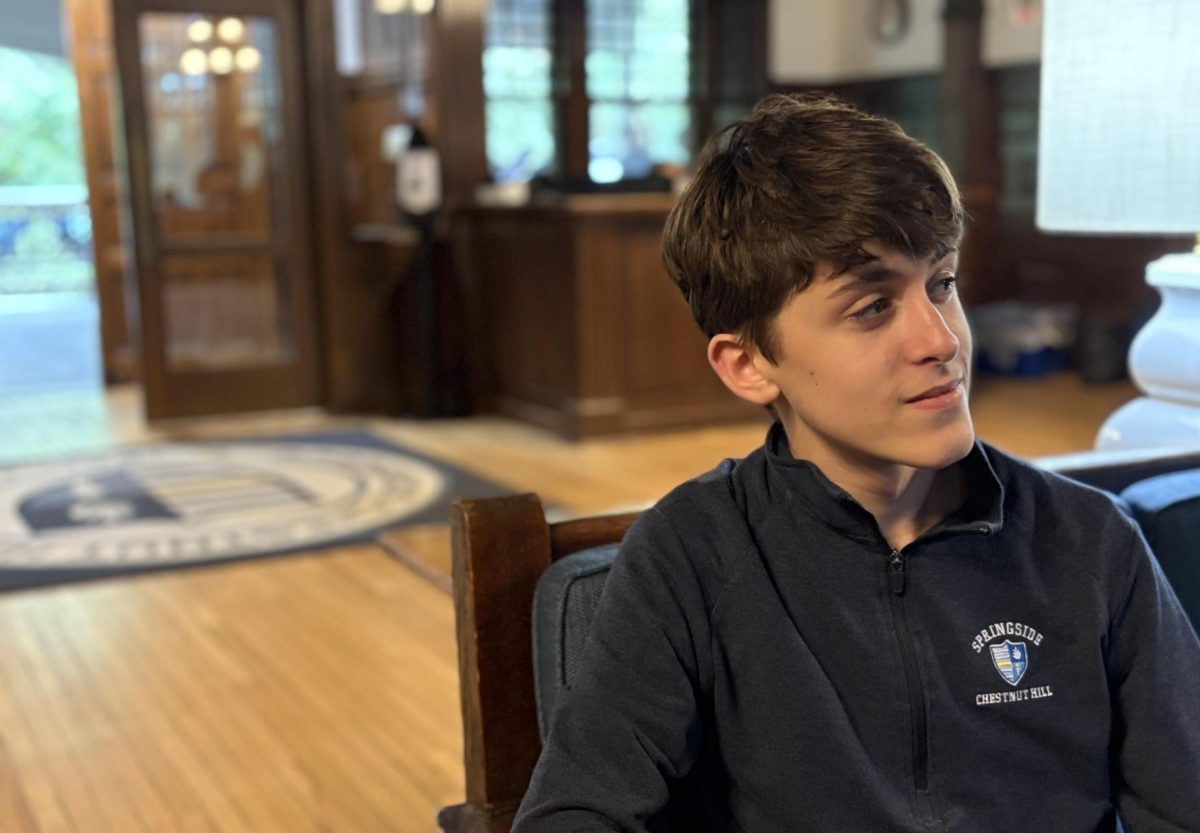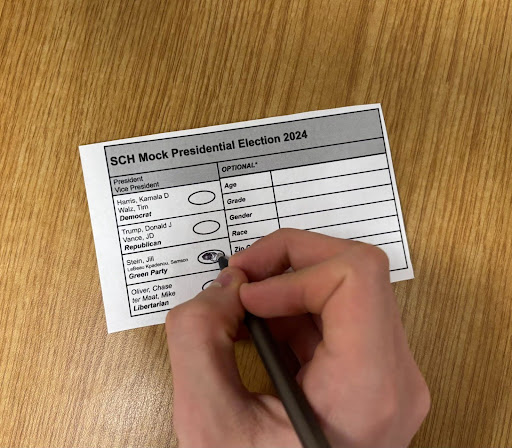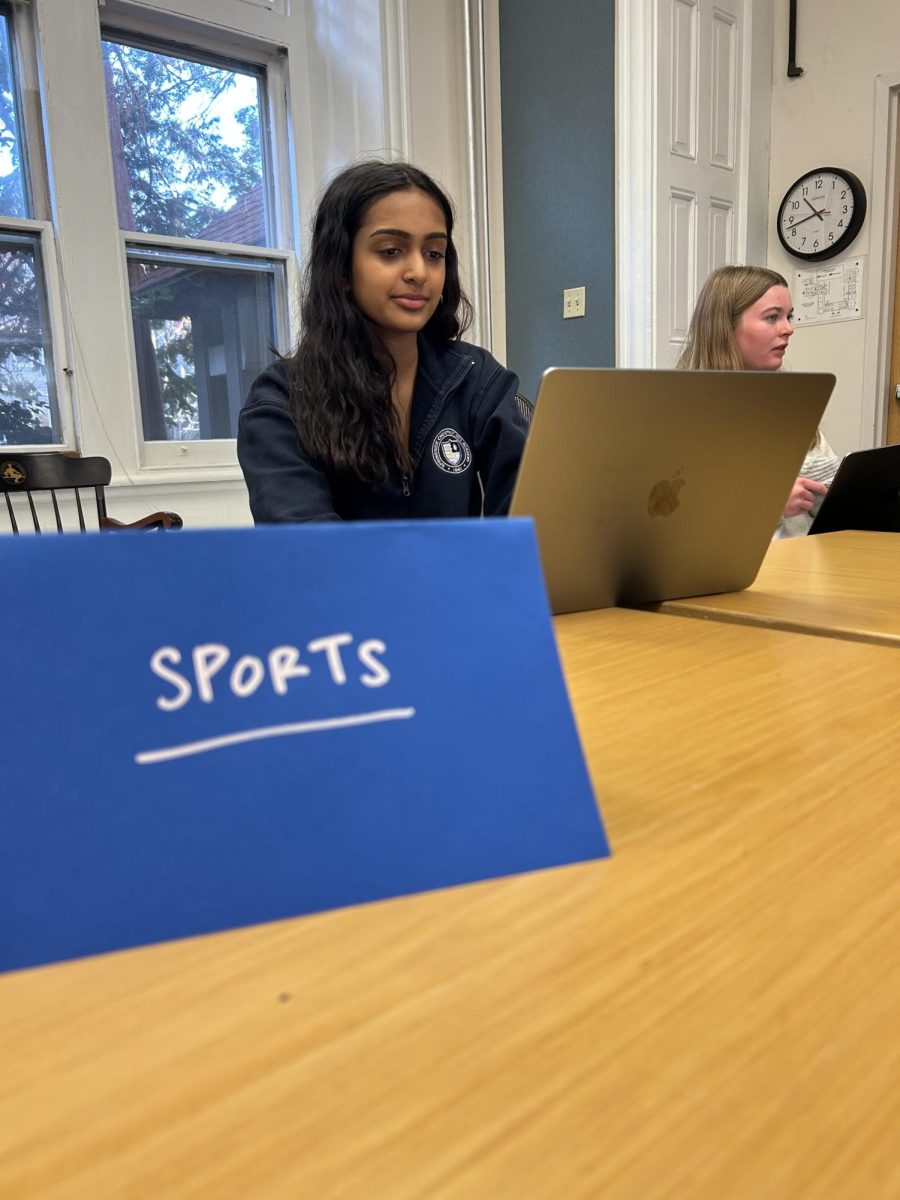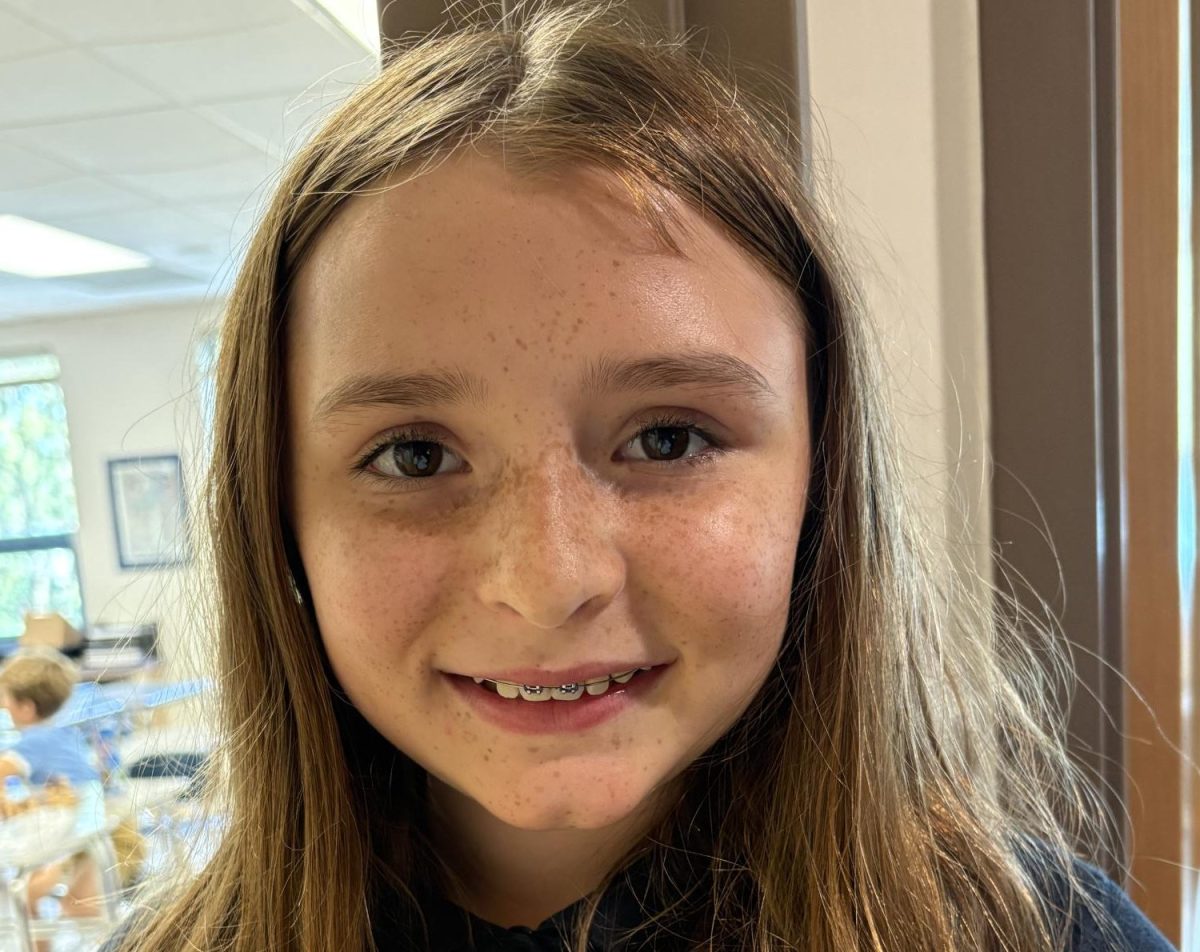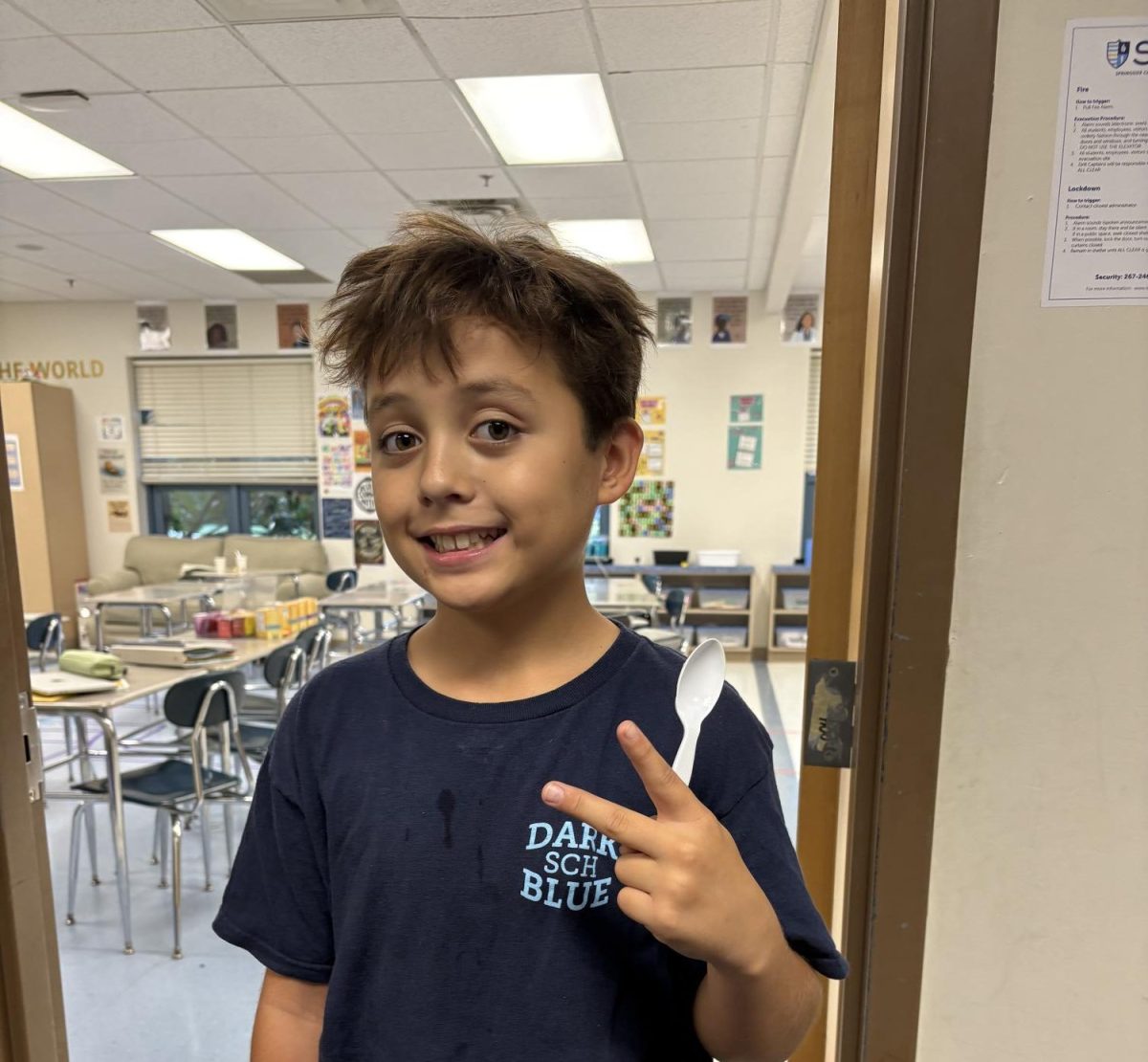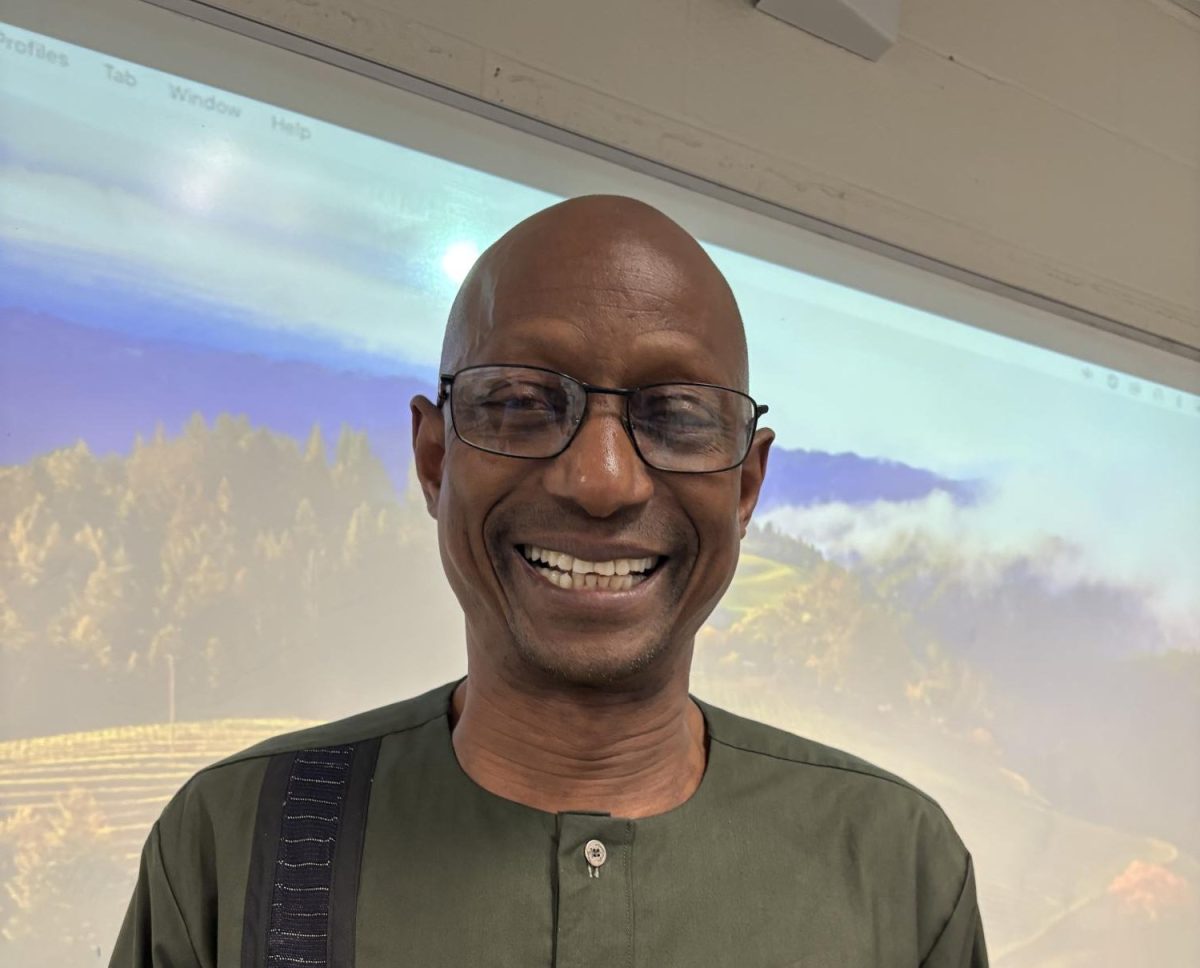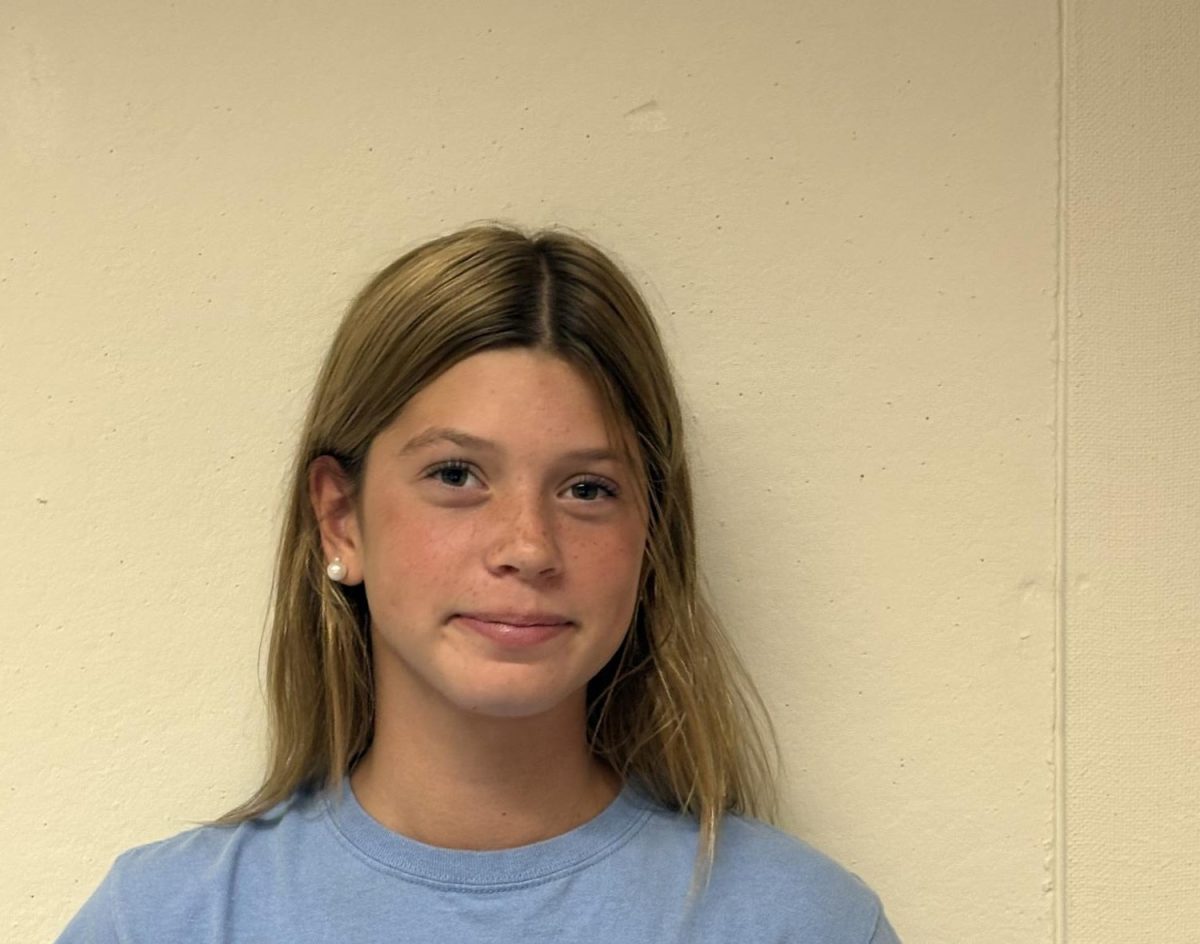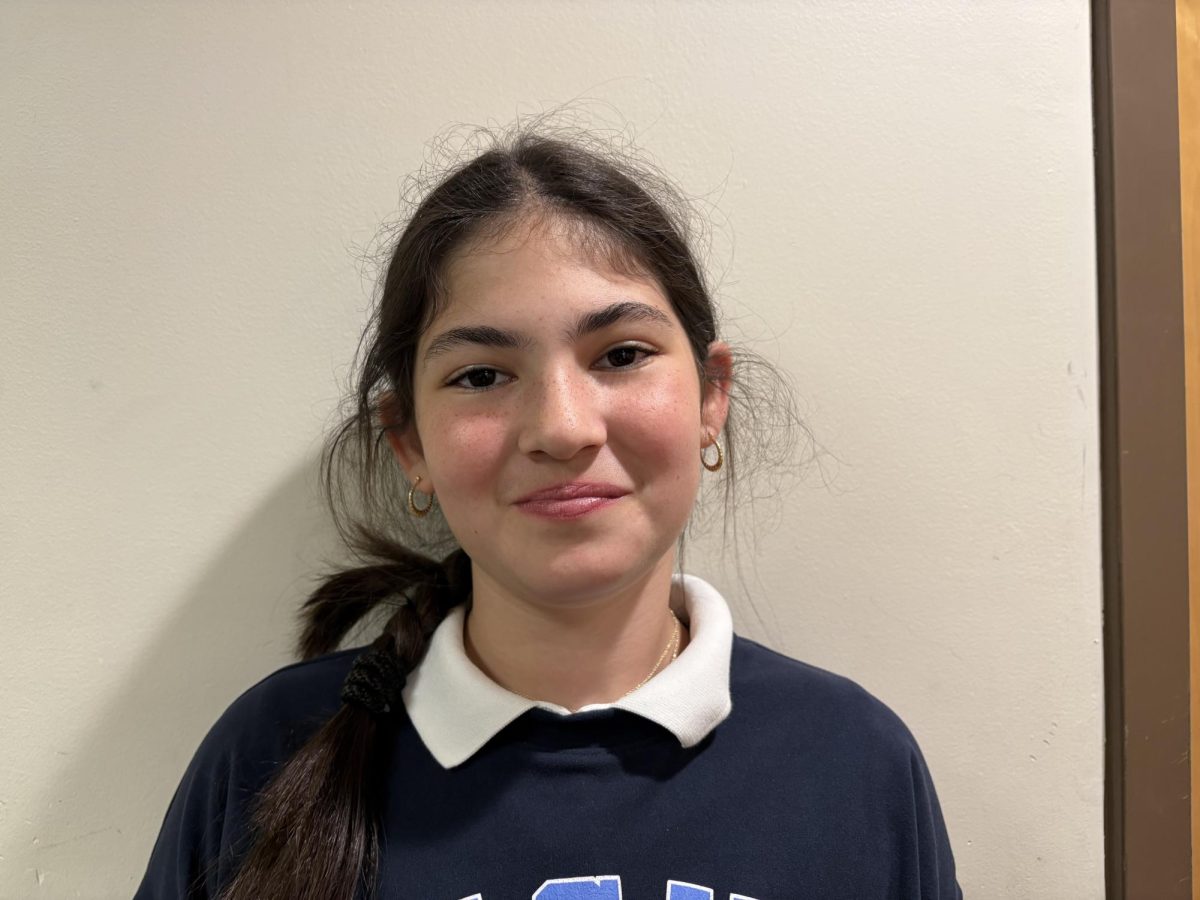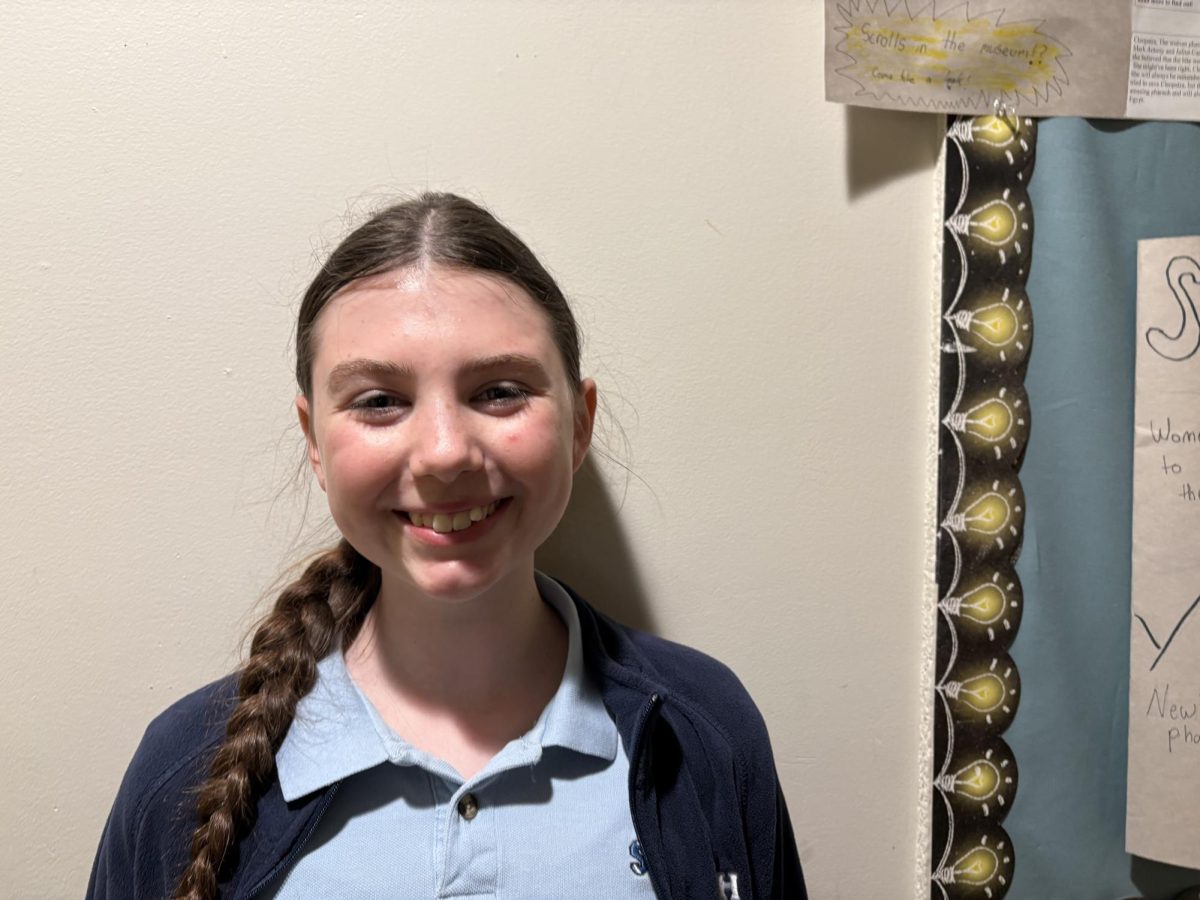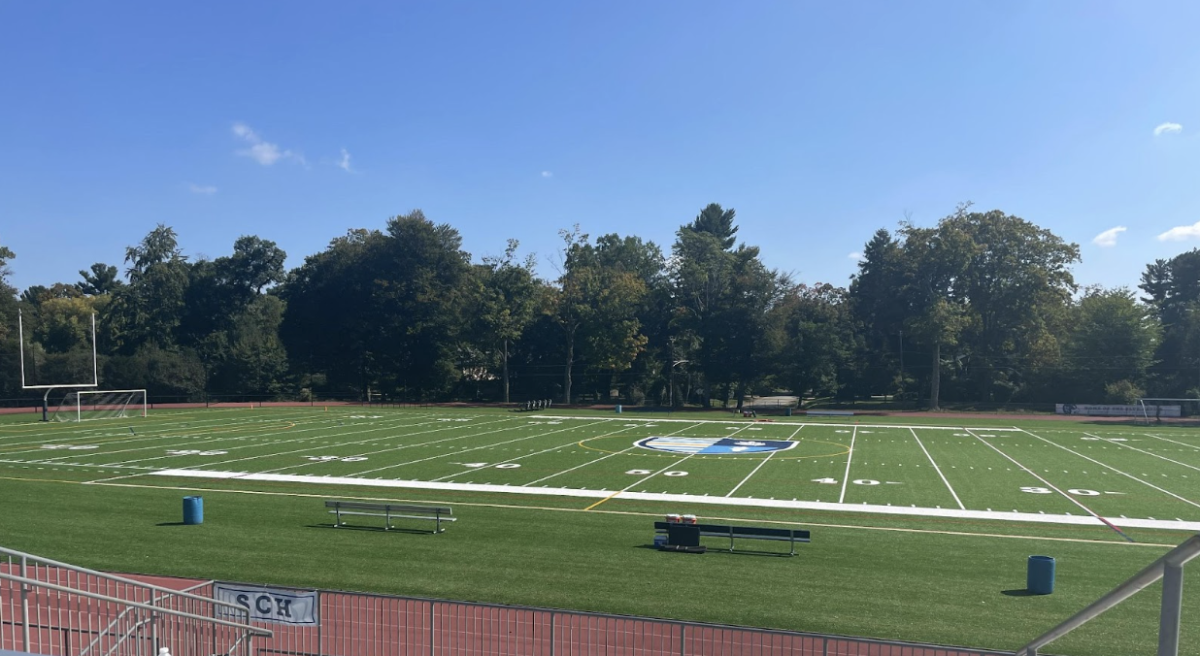Replacing the old, artificial turf fields this past August with organic, innovative turf technology made athletes at Springside Chestnut Hill Academy safer. The new fields, manufactured by both AstroTurf and Brock USA, make a positive impact on the players and on the planet.
Dave Wilson, SCHA athletic director, explained that Landreth field “has two inch fibers” of artificial grass, while the Class of 2016 field has “inch and a half fibers.” Athletic rules regulate contact from sport to sport, meaning that when players on different teams compete, they’ll take different levels of impact. At SCH, different sports compete on different fields— football, girls soccer, and girls lacrosse play on Landreth, while boys soccer, field hockey, and boys lacrosse are on Class of 2016. The artificial grass’s height along with the amount of all-natural infill on each field correlate to the assumed degree of contact in the sports played.
Although the fibers’ heights on the the Landreth and Class of 2016 fields are not the same, “there’s a [shock] pad below the actual carpet” on both, which helps them to absorb impact. Both Landreth and Class of 2016 fields bth “pass the Gmax guidelines,” said Mr. Wilson. That’s the test that determines how much energy the field will absorb on impact vs. the player. A high Gmax score means the athlete takes much more of the hit than the field does, so, the lower the Gmax score, the better. Because both fields’ Gmax ratings are low enough, the football team “could practice on the Class of 2016 field,” says Mr. Wilson. Before the turf replacement and implementation of the Brock Shock Pads, “there wasn’t a way, because the Gmax rating was higher for Class of 2016 field than it was for Landreth.”
A study conducted by the widely respected Concussion Legacy Foundation found that “1 in 5 concussions is caused by head to surface impact.” By absorbing a portion of the impact, the Brock Shock Pad, under SCH’s new fields, reduces concussion risk.
Possibly the largest difference in the turf itself from the previous, synthetic crumb rubber infill, is that instead of those trademark black beads, SCH’s new turfs are filled with all-natural particles from a species of southern pine. The small, organic wood chips solve the artificial turf industry’s “end-of-life problem” with their recyclability.
Before, when an old crumb rubber turf system was finished being used, it would be thrown into a landfill, and ultimately pollute the environment. Now, when the new SCH fields need to be redone again, the organic southern pine particles will be composted, and then replanted to grow more trees, which can eventually be used to make more of the all-natural particles.
Ryan McManus, a senior captain of the boys soccer team, one of the first athletes to compete on the natural turf in pre-season this past summer, noticed that the Class of 2016 field “definitely does feel cooler.” He remembers a game the team played at Conestoga High School, which was “very hot, and they had [synthetic] turf, which definitely made it a lot hotter.” At the home field now, however, Ryan said, “you don’t have the feeling that your feet are on fire when it’s a hot day.”
Artificial, crumb rubber turf can reach up to 180 degrees in some places. Overheated fields make athletes more easily dehydrated, and therefore more susceptible to injury. Logically, players are safer on a cooler turf.
Springside Chestnut Hill Academy’s Chief Financial Officer Frank Aloise said that “We researched our options before choosing the Brockfill product as the best option for our new fields.” The product was new (2019) since SCH’s old turfs were done in 2012, but “many schools across the country had already used [Brock USA’s] product and it has been extensively tested.” Mr. Aloise said SCH was “impressed with its sustainability, and the research that showed reduced temperature on the field and lower injuries.”
That’s a theme of Brock USA’s— extensive research. A whole section on their website is devoted to technical reports, research papers, certifications, charts & graphs, and videos.
Like other athletes at SCH, Ryan McManus feels “that the new turf is very sharp.” Falling and sliding on the pine wood particles “can be a little unforgiving,” in terms of skin abrasion. Ryan recognizes, though, that every new thing needs some “adjustment,” especially because the technology is so different from “the regular turf that we’ve all known for, like, our entire lives.”
He “loves how the field looks,” overall, and especially appreciates the addition of “[SCH’s] logo in the middle.” “Go Hillers!” Ryan added.

